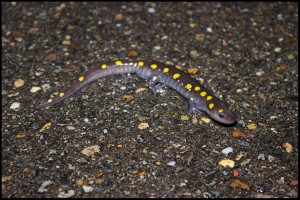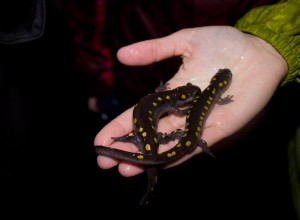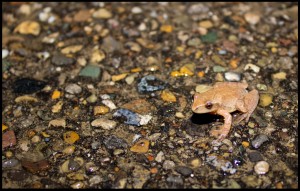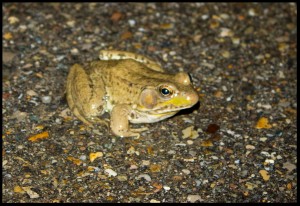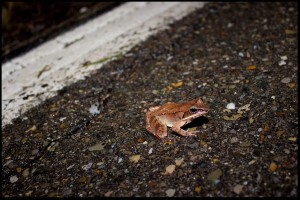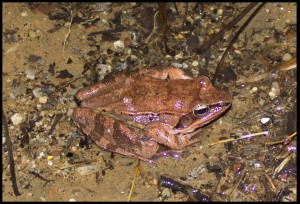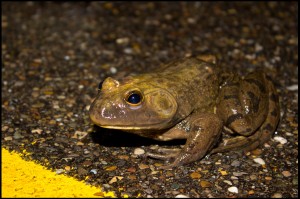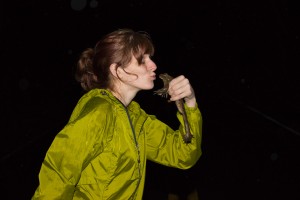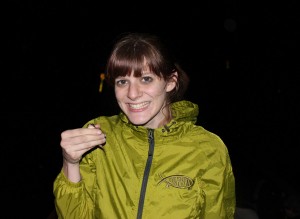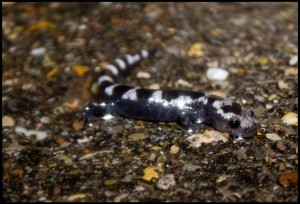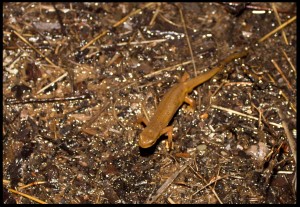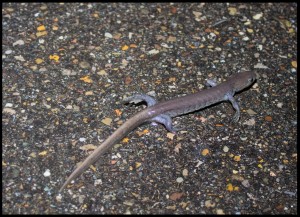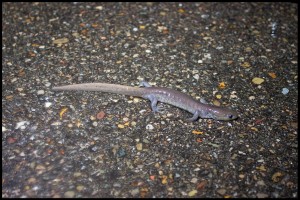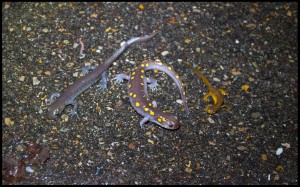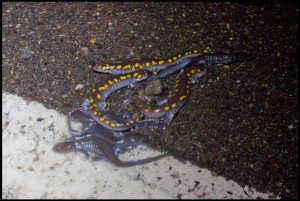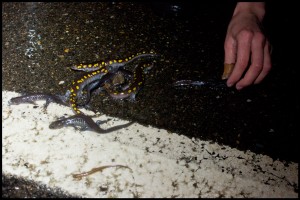Spring Migration!
While I am focusing on Plethodontid salamanders for my dissertation work, I still enjoy finding all amphibian species. The spring breeding migration is one of the best times to see a large number of individuals as well as a diversity of species. The spring migration occurs in early spring, normally early March when there is a hard rain and temperatures are around 55 degrees Fahrenheit. Typically, one qualification for a strong migration is a week or so of warmer temperatures to help warm the ground. If it is freezing cold for weeks on end and we suddenly get a nice warm rain chances are the migration will be smaller and many individuals will wait until later in the year. In a good year, the majority of individuals will migrate all around the same time, in years with odd weather, this can be broken up over several smaller migrations.
This year a few friends and myself went out on Monday March 11th. This was probably the best migration I have experienced in my 3 years in Athens, OH. We found a bunch of different species, most of which were in high numbers.
The night started around 8 pm on route 356 just outside of Athens. The first salamander we found was several Spotted Salamander (Ambystoma maculatum), always a joy to find because they are rarely seen outside of the migration and they are quite beautiful.
As the night continued on we started finding several species of frogs including Spring Peepers (Pseudacris crucifer), Green Frog (Rana clamitans), Wood Frogs (Rana sylvatica), and Bullfrogs (Rana catesbeiana).
We also were treated to a somewhat unexpected surprise. Marbled Salamanders (Ambystoma opacum) migrate in the fall, however sometimes a few will be out during the spring migration. Lucky for us, we stumbled across one during our search.
We also saw several Red-spotted Newts. Unfortunately, we also saw dozens of road killed salamanders and the newts seemed to be the majority of the dead.
Towards the end of our night out, around 9:30 pm, we started to see the real push to the ponds with large numbers of all species, including a flood of Jefferson’s Salamanders (Ambystoma jeffersonianum).
Overall, it was a great night! Tons of awesome amphibians. It really made me extra excited for starting field work in April. I plan on posting a trip itinerary soon in case anyone wants to meet up with me during my field work this spring and summer. Until then, I hope you enjoyed the photos.

